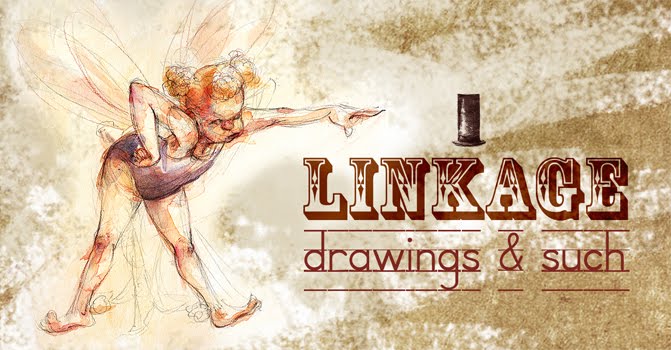

Gravity and the Ground Plane
What is a pose or action if it is merely floating in space? We are only telling half of the story without suggesting the anchor.
Given the few moments we have to tell our stories. we don't have the luxury of painting elaborate backgrounds, but we can imply visual cues rather efficiently.
They are:
1. Gravity
2. Ground Plane
Both of these require a working knowledge of perspective which in turn helps us view the action in 3-D. One of the things that I have noticed over the last few weeks is the flattening out of everyone's drawings. The hardest principle to apply in real time drawing is thinking in 3-D while designing a strong silhouette. In order to think in 3-D you MUST accept that forms overlap. That some forms will be hidden by others. Always go back to the inherent volumes that each area of the body has. Simplify first! Move from the general to the particular.
Not conceiving the action in 3-D cripples the ability to tell the story...
How to use perspective in a simplified manner
While the human form is far more complex than a box the same rules apply as they are both merely objects in space. A quick shorthand way of picturing your action in perspective is to imagine the action contained in a box and then visualize it in perspective. This helps define the spatial relationship of your figures individual forms and any props or secondary elements.
We must see the silhouette and the 3-D form working hand in hand—not as separate agents. The more we pull forms like arms and legs away from the body the more we get the form to read. In doing so, we will often overlap forms and foreshorten. Here is where perspective becomes your friend.
Elements to include that suggest the ground plane
1. drop shadows - they don't have to be the exact shadows inherent in the given lighting. They can be merely an implication of lighting, but it will give us a sense of gravity and space.
2. grids - a grid is the implication of criss-crossing lines that project out from the vanishing points along the horizon line.
While these are inherently invisible, they can show up in reality as floorboards, stone pathways, base boards on a wall, floor tiling etc.
Sometimes it's as simple as just showing the horizon line! The grid idea only needs to imply it doesn't need to dominate. Remember, a 5-minute drawing doesn't give you a lot of time to draw exact ideas...nor is it necessary.
When all the elements are in place the story really begins to take shape.
Composing these elements in a picture plane becomes the next step. One of the basic principles is the rule of thirds which divides our picture plane into thirds both horizontally and vertically. Developing a center of interest that is off-center allows us to create a more dynamic use of space without falling dangerously into the edges of the picture plane.
It works in composing from an abstract, pattern oriented 2-D way as well as a 3-D way. In particular quickly applying a grid can suggest they entire feel of the story. We can tilt the entire camera up or down quite quickly and that in and of itself drastically changes the feel of the story....

No comments:
Post a Comment